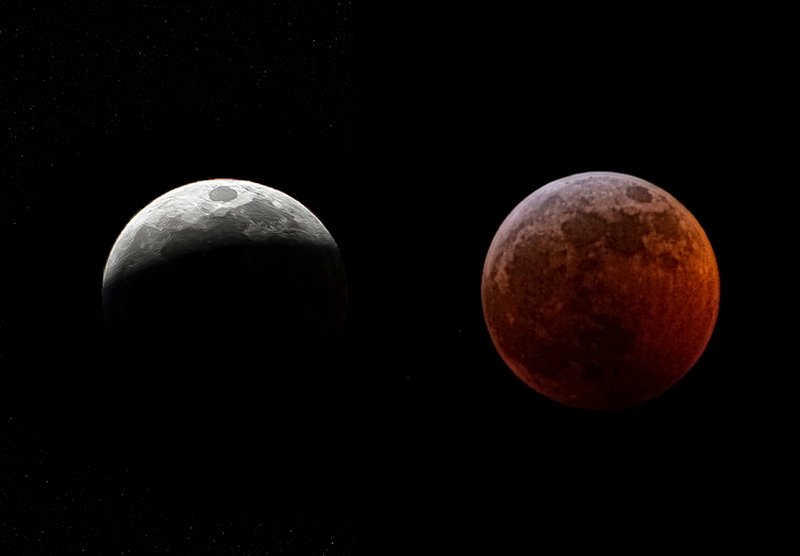A lunar eclipse producing a “Super Blood Wolf Moon” was overly visible Sunday night in Magnolia, and across half of the globe, as cold, cloudless south Arkansas skies offered perfect views of the astronomical rarity.
The eclipse, which was produced as the Sun, Earth, and Moon all aligned, cast a large shadow over the lunar body locally from approximately 9 to 10:30 p.m. By 11 p.m., the reddish, “blood” cast had nearly wrapped itself over most of the visible lunar surface. The red cast lasted 62 minutes, according to meteorologists.
Sunday’s celestial event featured not only a “supermoon” — a moon slightly closer to Earth than usual — but it also took on the “wolf” designation, since it was the first full moon of January. The blood-red color cast during the eclipse was due to beams of sunlight bouncing and ricocheting through the atmosphere, displaying the unique color casting from a planetary viewpoint.
The eclipse — the only one of 2019 — was visible throughout North and South America, as well as parts of Europe. Locally, and across the southeastern United States, skies were clear. According to NASA, lunar eclipses can happen only during a full moon, when the Moon and the Sun are on opposite sides of Earth. At that point, the Moon can move into the shadow cast by Earth, resulting in a lunar eclipse.
The national space agency also stated that lunar eclipses have since ancient times played an important role in understanding Earth and its motions in space.
“In ancient Greece, Aristotle noted that the shadows on the Moon during lunar eclipses were round, regardless of where an observer saw them,” said NASA. “He realized that only if Earth were a spheroid would its shadows be round – a revelation that he and others had many centuries before the first ships sailed around the world.”
According to the Associated Press, there will not be another full eclipse until 2021. That event, though, will not see the hour-long “blood” casting over the Moon, as was the case Sunday night.
The last super blood moon was visible in Arkansans, Sept. 27, 2015. But a NWA Democrat-Gazette report stated that heavy cloud cover obscured much of the state’s viewing during that event.

